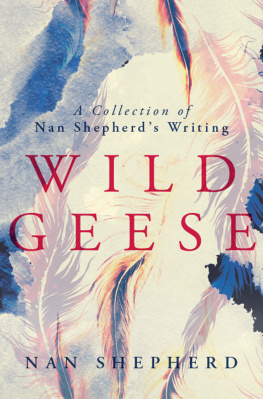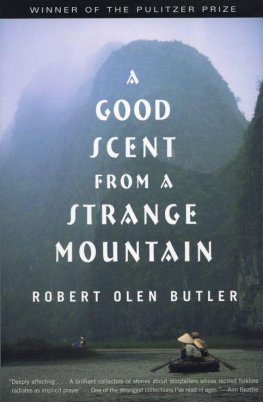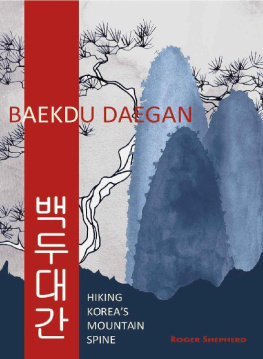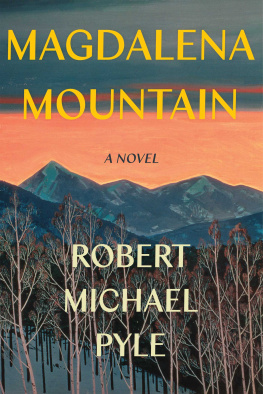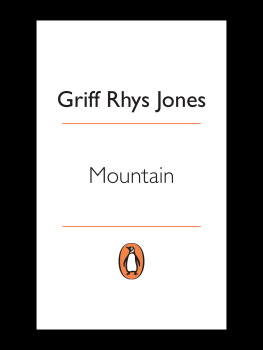Nan Shepherd - The Living Mountain
Here you can read online Nan Shepherd - The Living Mountain full text of the book (entire story) in english for free. Download pdf and epub, get meaning, cover and reviews about this ebook. year: 2009, publisher: Canongate Books, genre: Art. Description of the work, (preface) as well as reviews are available. Best literature library LitArk.com created for fans of good reading and offers a wide selection of genres:
Romance novel
Science fiction
Adventure
Detective
Science
History
Home and family
Prose
Art
Politics
Computer
Non-fiction
Religion
Business
Children
Humor
Choose a favorite category and find really read worthwhile books. Enjoy immersion in the world of imagination, feel the emotions of the characters or learn something new for yourself, make an fascinating discovery.
- Book:The Living Mountain
- Author:
- Publisher:Canongate Books
- Genre:
- Year:2009
- Rating:4 / 5
- Favourites:Add to favourites
- Your mark:
- 80
- 1
- 2
- 3
- 4
- 5
The Living Mountain: summary, description and annotation
We offer to read an annotation, description, summary or preface (depends on what the author of the book "The Living Mountain" wrote himself). If you haven't found the necessary information about the book — write in the comments, we will try to find it.
The Living Mountain — read online for free the complete book (whole text) full work
Below is the text of the book, divided by pages. System saving the place of the last page read, allows you to conveniently read the book "The Living Mountain" online for free, without having to search again every time where you left off. Put a bookmark, and you can go to the page where you finished reading at any time.
Font size:
Interval:
Bookmark:
Thirty years in the life of a mountain is nothingthe flicker of an eyelid. Yet in the thirty years since this book was written many things have happened to the Cairngorms, some of them spectacular things, things that have won them a place in the Press and on the television screens:
Aviemore erupts and goes on erupting.
Bulldozers birze their way into the hill.
Roads are made, and re-made, where there were never roads before.
Skiers, swift, elate, controlled, miracles of grace and precision, swoop and soaror flounderbut all with exhilaration.
Chair-lifts swing up and swing down (and a small boy falls from one and is killed).
A restaurant hums on the heights and between it and the summit Cairn Gorm grows scruffy, the very heather tatty from the scrape of boots (too many boots, too much commotion, but then how much uplift for how many hearts).
New shelters are sited for climbers. A cottage at Muir of Inverey is enlarged and fitted up as a place of resort for Cairngorm Club members, the members themselves laying the flooring and erecting the bunks.
Glenmore houses and trains those ready to learn. Skills are taught and tested. Young soldiers learn the tech-niques of Adventure. Orienteers spread over the land (but the Lairig Ghru, so far, is not to be tamed as part of a national way).
Reindeer are no longer experimental but settlers.
The Nature Conservancy provides safe covert for bird and beast and plant (but discourages vagabonds, of whom I have been shamelessly onea peerer into ivcorners). Ecologists investigate growth patterns and problems of erosion, and re-seed denuded slopes.
The Mountain Rescue service does its magnificent work, injured are plucked from ledges by helicopter, the located, the exhausted carried to safety.
And some are not rescued. A man and a girl are found, months too late, far out of their path, the girl on abraded hands and knees as she clawed her way through drift. I see her living face still (she was one of my students), a sane, eager, happy face. She should have lived to be old. Seventy men, with dogs and a helicopter, go out after a lone skier who has failed to return, and who is found dead. And a group of schoolchildren, belated, fail to find the hut where they should have spent the night. They shelter against a wall of snow, but in the morning, in spite of the heroic efforts of their instructress, only she and one boy are alive.
All these are matters that involve man. But behind them is the mountain itself, its substance, its strength, its structure, its weathers. It is fundamental to all that man does to it or on it. If it were not there he would not have done these things. So thirty years may alter the things he does but to know it in itself is still basic to his craft. And that is what, thirty years ago, I was striving to do in this manuscript. It was written during the latter years of the Second War and those just after. In that disturbed and uncertain world it was my secret place of ease. The only person who read the manuscript then was Neil Gunn, and that he should like it was not strange, because our minds met in just such experiences as I was striving to describe. He made a couple of suggestions as to publication, but added that in the circumstances of the time a publisher would be hard to find. I wrote one letter at his instigation and received a courteous and negative reply and the manuscript went into a drawer and has lain there ever since. Now, an old woman, I begin tidying out my possessions and reading it again I realise that the tale of my traffic with a mountain is as valid today as it was then. That it was a traffic of love is sufficiently clear; but love pursued with fervour is one of the roads to knowledge.
August 1977
The Cairngorm Mountains of north-east Scotland are Britains Arctic. In winter, storm winds of up to 170 miles per hour rasp the upper shires of the range, avalanches scour its slopes and northern lights flare green and red above the summits. Even in high summer, snow still lies in the deepest corries, sintering slowly into ice. Year-round the wind is sow insistent that on the plateaux there are bonsai pines, fully grown at six inches, and juniper bushes which flatten themselves across the rocks to form densely woven dwarf forests. Two of Scotlands great rivers the Dee and the Avon have their sources here: falling as rain, filtered by rock, pooling as the clearest water into which I have ever looked and then running seawards with gathering strength. The range itself is the eroded stump of a mass of magma that rose up through the earths crust in the Devonian period, cooled into granite, then emerged out of the surrounding schists and gneiss. The Cairngorms were once higher than todays Alps, but over millions of years they have been eroded into a low-slung wilderness of whale-backed hills and shattered cliffs. Born of fire, carved by ice, finessed with wind, water and snow, the massif is a terrain shaped by what Nan Shepherd in this slender masterpiece about the region calls the elementals.
Anna (Nan) Shepherd was born near Aberdeen in 1893 and died there in 1981, and during her long life she spent hundreds of days and thousands of miles exploring the Cairngorms on foot. Her reputation as a writer rests chiefly on her three modernist novels The Quarry Wood, The Weatherhouse, A Pass in the Grampians but to my mind her most important prose work has until recently been her least-known: The Living Mountain, which she wrote during the last years of the Second World War.
Shepherd was localist of the best kind: she came to know her chosen place closely, but that closeness served to intensify rather than to limit her vision. She had a modest middle-class upbringing and a modestly regional life: she attended Aberdeen High School for Girls, graduated from Aberdeen University in 1915 and worked for the subsequent forty-one years as a lecturer in English at what is now the Aberdeen College of Education (wryly describing her teacherly role there as the heaven-appointed task of trying to prevent a few of the students who pass through our Institution from conforming altogether to the approved pattern). She travelled widely including to Norway, France, Italy, Greece and South Africa but only ever lived in the village of West Cults on north Deeside. The Cairngorms, whose foothills rise a few miles from West Cults, were her heartland. Into and out of those mountains she went in all seasons, by dawn, day, dusk and night, walking sometimes alone, and sometimes with friends, students or fellow walkers from the Deeside Field Club. Like all true mountain-lovers, she got altitude sickness if she spent too long at sea-level.
From a young age, Shepherd was hungry for life. She seems to have lived with a great but quiet gusto. Writing to a friend about a photograph of herself as a toddler on her mothers knee, she describes herself as all movement, legs and arms flailing as though I were demanding to get at life I swear those limbs move as you look at them. Intellectually, she was what Coleridge once called a library-cormorant; omnivorous and voracious in her reading. On 7 May 1907, aged just fourteen, she started the first of what she called her medleys commonplace books into which she copied literary, religious and philosophical citations, and which reveal the breadth of her reading as a young woman.
Shepherd published her three novels in an extraordinary five-year burst of creativity between 1928 and 1933. Hard on their heels came a collection of poetry titled In The Cairngorms, which was published in 1934 in a tiny print run and is now almost impossible to find. It was the book of which she was most proud. Shepherd had a clear genre hierarchy in her mind, and poetry was at its pinnacle. Poetry, she wrote to the novelist Neil Gunn (with whom she had a flirty and intellectually ardent correspondence), holds in intensest being the very heart of all experience, and offers glimpses of that burning heart of life. She felt that she could only produce poetry when she was possess[ed], when her whole nature... suddenly leaped into life. But she worried aloud to Gunn that her poems about stars and mountains and light were too cold, too inhuman. Still, she admitted, [w]hen Im possessed thats the only kind of thing that comes out of me.
Font size:
Interval:
Bookmark:
Similar books «The Living Mountain»
Look at similar books to The Living Mountain. We have selected literature similar in name and meaning in the hope of providing readers with more options to find new, interesting, not yet read works.
Discussion, reviews of the book The Living Mountain and just readers' own opinions. Leave your comments, write what you think about the work, its meaning or the main characters. Specify what exactly you liked and what you didn't like, and why you think so.


